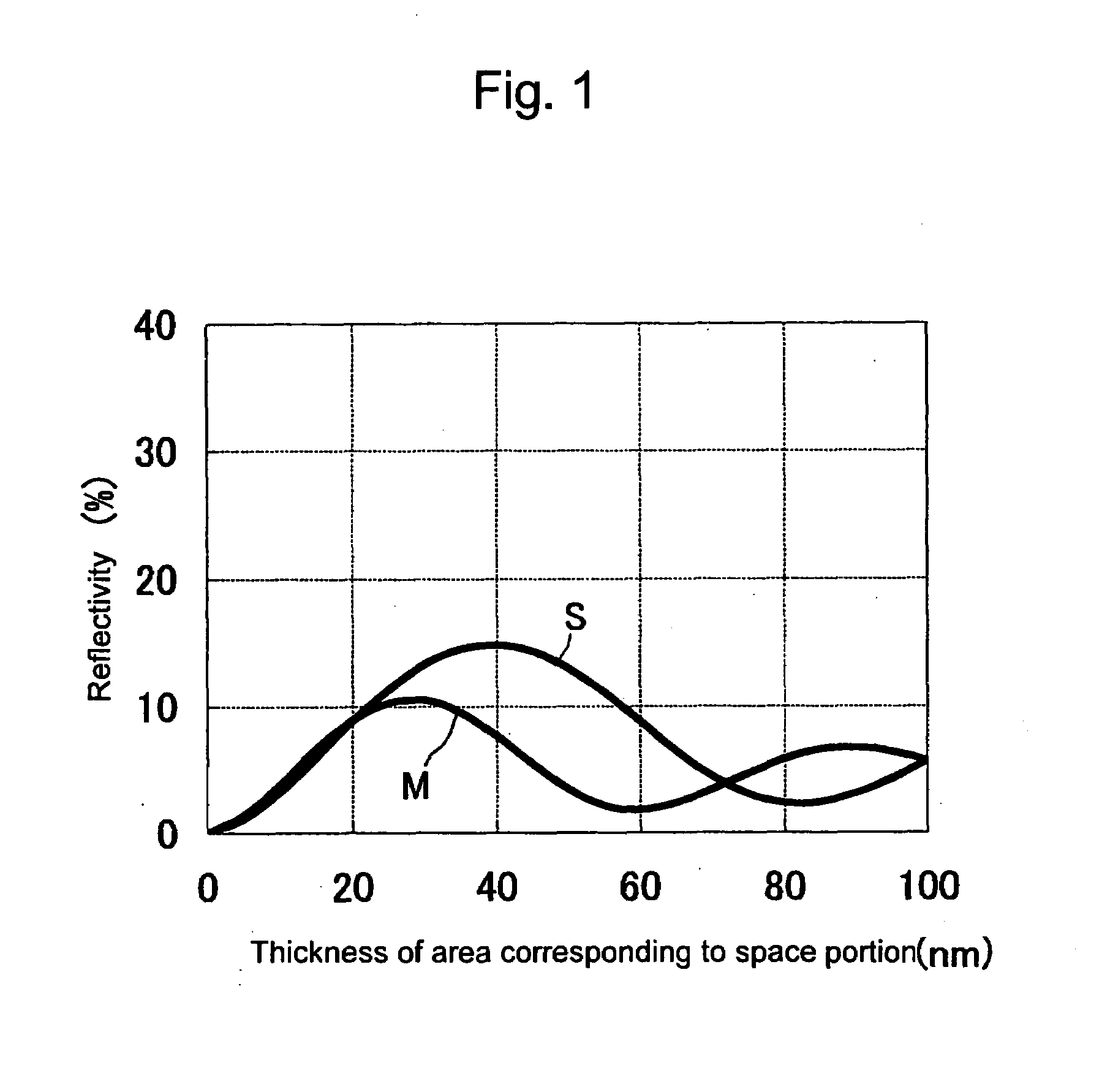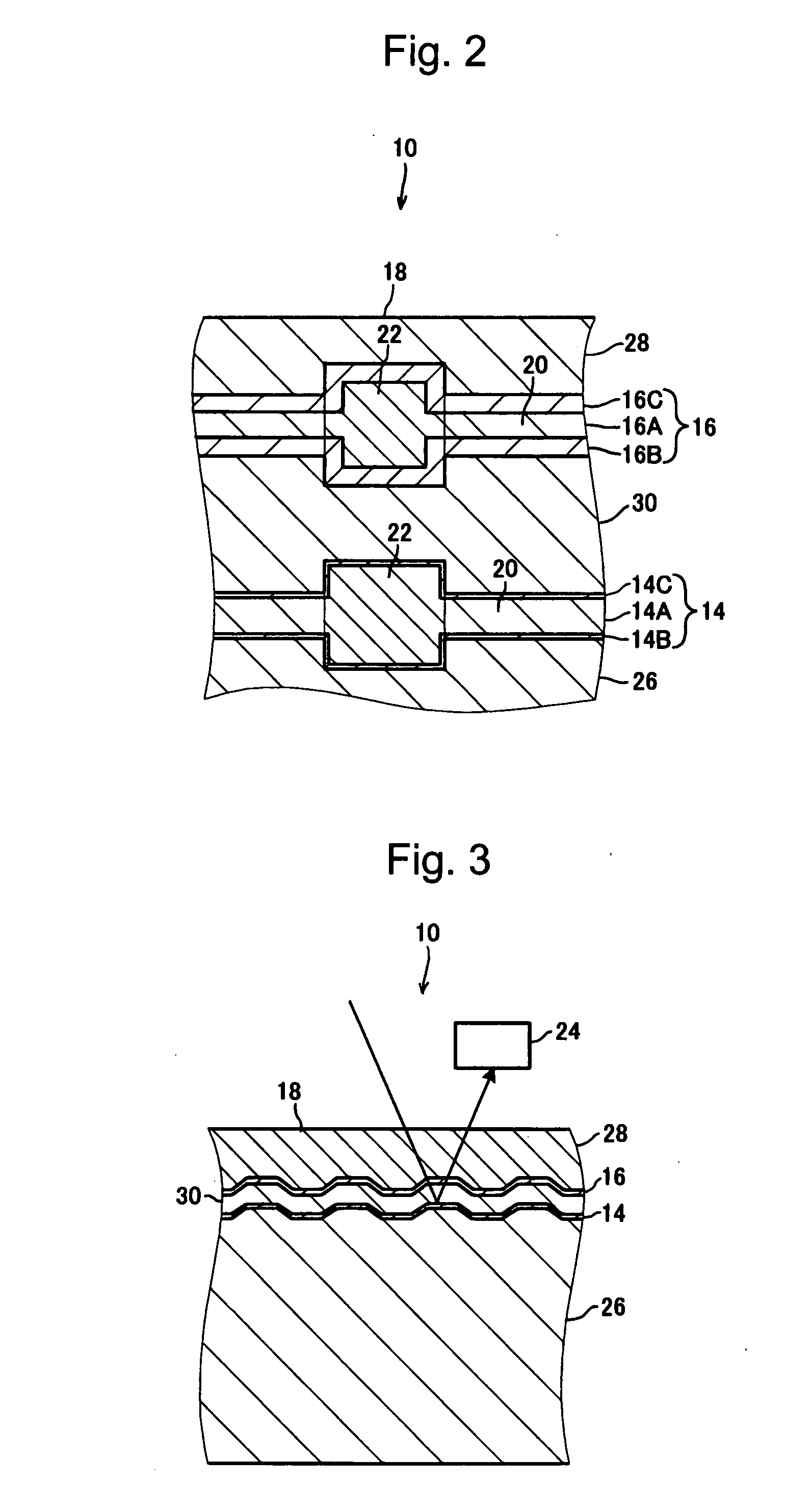Optical recording medium
a recording medium and optical technology, applied in the field of optical recording mediums, can solve the problems of small difference in reflectivity, insufficient power of recording laser beam at the lower recording layer to form a good quality recording mark in the lower recording layer, etc., and achieve the effect of reducing production costs
- Summary
- Abstract
- Description
- Claims
- Application Information
AI Technical Summary
Benefits of technology
Problems solved by technology
Method used
Image
Examples
working example 1
[0084]Three samples S1, S2, and S3 of one-sided optical recording media with two information layers, having the same structure as the optical recording medium 10 according to the first exemplary embodiment, were manufactured. The samples S1, S2, and S3 differed from each other in the thicknesses of the dielectric layers 16B and 16C of the second information layer 16, and the specifications other than the dielectric layers 16B and 16C were the same for all these samples.
[0085]Specifically, the recording layer 14A of the first information layer 14 and the recording layer 16A of the second information layer 16 were made of bismuth and oxygen, where the ratio of the number of oxygen atoms to the number of constituent atoms in the recording layers 14A and 16A was 71% (being not less than 63%), the ratio of the number of bismuth atoms to the number of constituent atoms in the recording layers was 29%, and there were no additional elements. The deposition conditions for the recording layer...
working example 2
[0097]A sample S4 having a recording layer 16A of second information layer 16 of 31 nm, being thinner than that of the sample S3 in Working Example 1 by 2 nm, was manufactured. The other specifications of the sample S4 were the same as those of the sample S3.
[0098]The reflectivities, recording sensitivity, and 8T C / N ratio of the first information layer 14 and the second information layer 16 were measured for the sample S4 in the same manner as Working Example 1. The measurement results are shown together with the structure of the first information layer 14 and the second information layer 16 for the sample S4 in Table 1.
working example 3
[0099]Two samples S5 and S6 of one-sided optical recording media with four information layers, having the same structure as the optical recording medium 50 according to the second exemplary embodiment, were manufactured. The samples S5 and S6 differed from each other only in the third information layer 52 and the fourth information layer 54, and the specifications other than the information layers 52 and 54 were the same for the samples S5 and S6. The composition and deposition conditions of the recording layers 14A, 16A, 52A, and 54A of the samples S5 and S6 were the same as those of the recording layers 14A and 16A of the samples S1, S2, and S3 in Working Example 1. The composition and deposition conditions of the dielectric layers 14B, 14C, 16B, 16C, 52B, 52C, 54B, and 54C of the samples S5 and S6 were also the same as those of the dielectric layers 14B, 14C, 16B, and 16C of the samples S1, S2, and S3 in Working Example 1.
[0100]The reflectivities, recording sensitivity, and 8T C / ...
PUM
 Login to View More
Login to View More Abstract
Description
Claims
Application Information
 Login to View More
Login to View More - R&D
- Intellectual Property
- Life Sciences
- Materials
- Tech Scout
- Unparalleled Data Quality
- Higher Quality Content
- 60% Fewer Hallucinations
Browse by: Latest US Patents, China's latest patents, Technical Efficacy Thesaurus, Application Domain, Technology Topic, Popular Technical Reports.
© 2025 PatSnap. All rights reserved.Legal|Privacy policy|Modern Slavery Act Transparency Statement|Sitemap|About US| Contact US: help@patsnap.com



